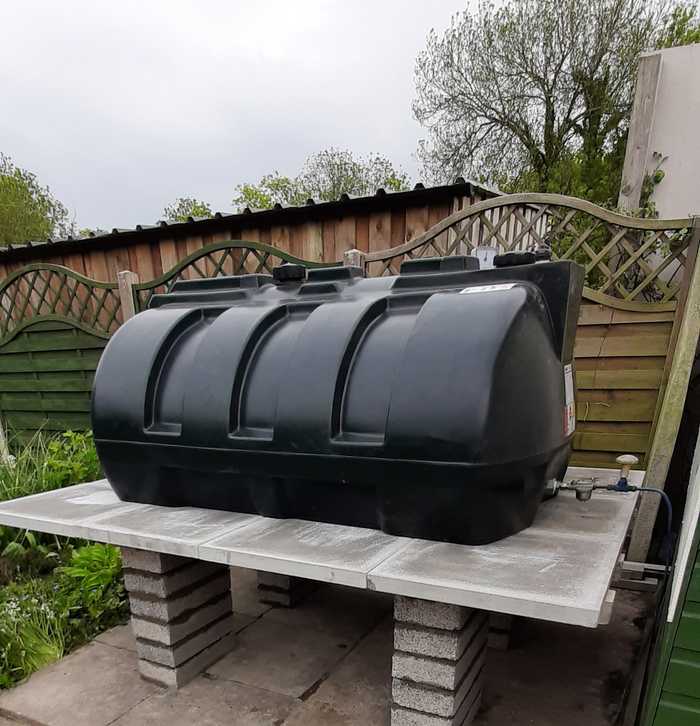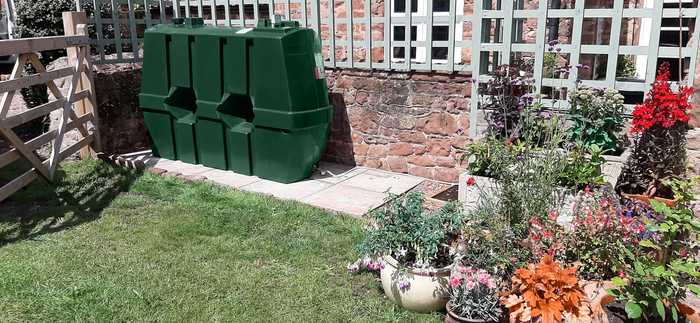What Size Oil Tank Should You Install In Your Home?

There are a number of different reasons why you might need a new oil tank. Perhaps you’re moving home and the existing tank needs replacing—or maybe you’re embarking on an ambitious renovation project, and the current tank just isn’t going to meet the demands of your new layout.
Whatever the case, before making any investment, before even deciding where the tank is going to be installed, it’s important to understand the practical considerations behind the purchase.
A good starting point is to think about these two key questions:
-
What size tanks are available to me?
-
Which size tank is going to best fit my household?
Let us guide you through the process of finding the right size oil tank for your home.
What size domestic oil tank is best for my home?
Deciding what size oil tank will be determined by a number of different factors. Here are a just few things to keep in mind when installing or replacing an oil tank:
Number of rooms in your house
It’s reasonable to assume that the more rooms you have in your home: the bigger oil tank you will require to efficiently meet the energy needs of your building.
As a simple formula, we would recommend that for each room in your home, you will need a minimum tank capacity of around 500 litres. So, five rooms would require a 2,500 litre tank. As suggested, though, for a more economical output, it’s worth investing in a bigger tank if you have the space and budget.
It’s also worth noting that suppliers often have a minimum oil volume that they will deliver at one time. So, the extra outlay for a larger tank will make savings over an extended period.
Number of people living in your home
While there’s a direct correlation between the number of people you have in your home to the number of rooms, it’s not quite as simple a calculation. There are several things you need to factor into your workings. Do you have children, for example? Do they share a bedroom? Does anyone in the household work from home?
As a general guide, the more people you have in the house, the quicker you will go through oil, and the bigger capacity tank you will need. If you’ve got the means and it makes sense logistically, go as large as possible.
How much space do you have?
The size of tank you opt for will be strictly governed by the amount of space you have available. As the vast majority of oil tanks are installed outside, as it’s generally the safest location, it will be further determined by the dimensions of your garden and outdoor space.

If you are installing a new tank to take the place of an old one, it’s a relatively easy task to see how much room you have to work with. The concrete or paving slab base left behind once the old tank is removed acts as a physical blueprint for the new installation. If you’re uprooting an existing tank, however, and moving it to a different location, then there’s a list of things to take into account:
First and foremost: fire safety.
There are strict guidelines that you must adhere to when installing your oil tank, all of which are designed to limit the catastrophic fire risk of oil when exposed to high temperatures or open flames. Here’s an overview of these regulations:
Your tank should be installed at least 1.8 metres away from a non-fire rated building such as garden sheds, greenhouses or wooden garage.
It needs to be at least 1.8 metres away from doors, windows, eaves of a building and flue outlet in a fire-rated building such as a brick-based house or garage
Your tank should be 760 millimetres away from any non-fire rated boundaries such as a wooden fence and 600 millimetres from any foliage.
Once you’ve designated a safe, non-fire risk location, other practical considerations to think about are:
-
How easy will it be to access for oil deliveries?
-
Is it easily accessible for maintenance and site-level checks?
-
Is it protected against the elements?
-
Is it hidden away from the view of potential oil thieves?
How can CT Tanks help?
In conclusion, then. As a general rule of thumb, the most practical, and, in the long term, most economical solution is to find the largest tank that your premises can comfortably accommodate. The larger your tank, the less chance of an emergency shortage…peace of mind in those long, winter months.
If you are looking to install a new oil tank or replace an old one, and you would like some expert guidance, then please don’t hesitate to get in touch with our team. We’d love to chat!
Posted on April 20th 2022

